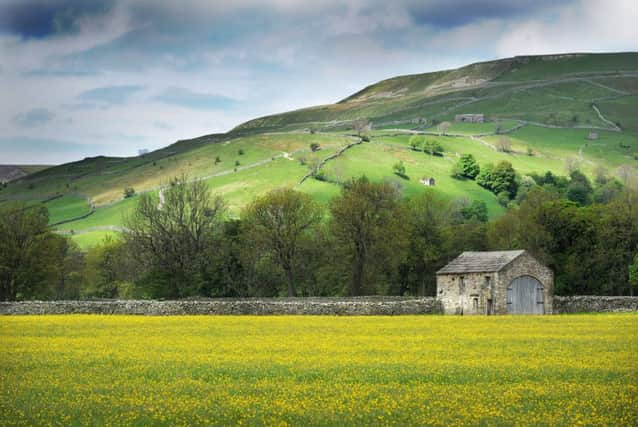Country & Coast: Springtime classic found in the woods stirs the senses


The pungent, richly appetising smell emitted by the broad, pointed leaves is one of the delights of spring, while the plant’s white-starred flowers light up many a woodland floor.
But the leaves are past their best as far as eating is concerned by early July. Later on they become less aromatic, and a walk through deciduous woods in which they are found is never quite the same.
Advertisement
Hide AdAdvertisement
Hide AdWild garlic is a member of the Allium family and more traditionally known as “ramsons”, often mispronounced “ransoms”.
Centuries ago places where the plant was abundant were sometimes named after it, a good example in Yorkshire being Ramsdale near Robin Hood’s Bay.
Some country folk use its nickname of ‘stinking nanny’. Others call it ‘gypsy’s onions’, a reminder that the leaves when they are at their strongest in April make a good substitute in cooking.
When onions were in short supply during the Second World War it was common for families to go out into their local woods in spring to gather wild garlic.
Advertisement
Hide AdAdvertisement
Hide AdThe bulbs, incidentally, are perfectly edible but less commonly used as an ingredient since it is so much easier to harvest the flavoursome leaves.
The uninitiated may mistake the leaves of lily-of-the-valley (Convallaria majalis) and lords and ladies (Arum maculatum) for wild garlic, but these two plants are highly poisonous and the first time you forage for garlic leaves it is vital to take along someone who can tell the difference.
If you do not know anyone who can help, a simple test is to rip up one of the leaves and have a good sniff. If you can’t smell garlic then it is best to go home empty-handed.
Once gathered and washed thoroughly there are numerous uses. It was Yorkshire’s James Martin who put me onto substituting wild garlic leaves for basil in pesto.
Advertisement
Hide AdAdvertisement
Hide AdThis goes well with fish dishes, but my more usual culinary application is to stir it into a plate of pasta and sprinkle over some finely grated Ribblesdale sheep cheese.
My favourite use, though, is to gently sauté a large number of the leaves in butter - the leaves wilt like spinach so use far more than you think you will need - then add double cream, lemon juice, zest and seasoning and stir the mixture into freshly cooked Jersey royals.
Served with another seasonal vegetable like asparagus as an accompaniment for lamb, pork, chicken or a white fish like sea bass, it is a meal you will want to cook every spring.
Herbalists recommend the leaves for the treatment of a number of conditions, including digestive disorders, rheumatism, high blood pressure and asthma, so it is hard not to conclude that wild garlic is one of the best woodland foraging targets between the months of April to June.